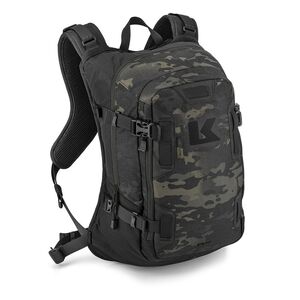It was seven years ago, plus a few months, that I first rode the Yamaha FZ-09. The day before my 30th birthday. Turning 30 wasn’t special for me, but the motorcycle made an impact.
The FZ-09 was a bit of a bombshell in the industry — eight grand for a 420-pound, hundred-horsepower laughter contraption was a good deal, and Yamaha has sold loads of them. But it was far from perfect. The throttle response from the 847 cc triple was way too sharp, to put it politely, and being adjustable to three different modes didn’t do much to solve it. On the flipside, the suspension was soft and not particularly adjustable.
A couple of specific memories from the day of the media-event ride stand out, even years later. First, flicking the bike from side to side along the terrific section of California’s Route 1 just south of Stinson Beach, graced with Tuesday traffic and September sunshine. I was peeling through corners at what felt like a reasonable pace until, in one left hander, the rear tire chattered like it had thrown a tire weight and slid out of line. The footpeg feeler buried itself in the road, and by some stroke of luck the tire hooked up and righted the bike with an undignified wobble. I checked my six for a witness. The rider behind me made his eyes wide and shook his head, laughing. Maybe a good allegory for the final day of riding in my 20s.
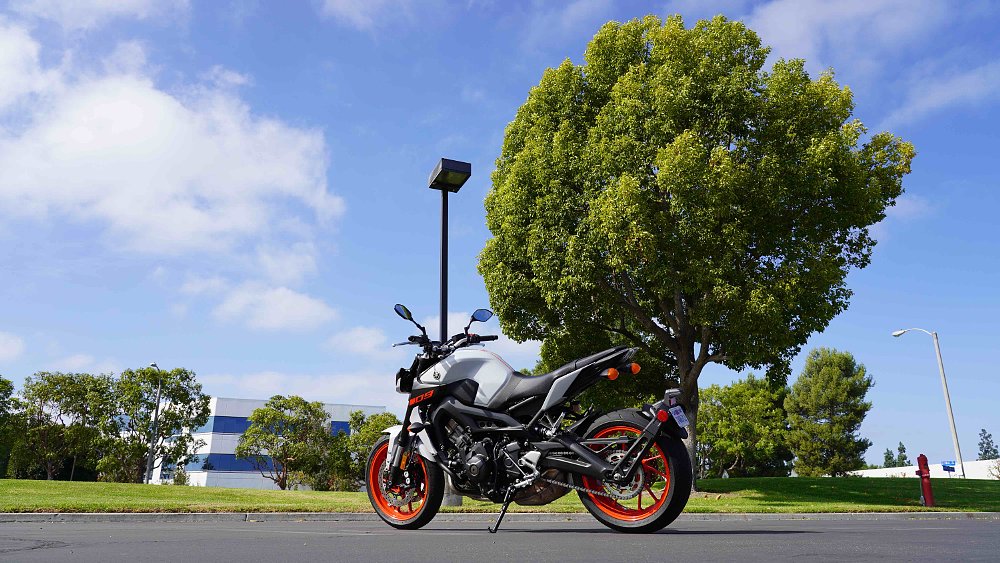
Earlier that day, I’d watched the Yamaha ride leader snap the throttle open briefly as we crested an intersection on one of San Francisco’s famously steep streets. Having commuted across SF on a motorcycle for years, I recognized the technique but not the reaction of the bike. The Fuzz-9 squatted and then rebounded so severely that it essentially bunny-hopped off the lip, showing a few inches of air under both wheels before landing on the down slope.
Those are the two faces of the FZ-09 that have stuck with me: An engine character that washes over you like a bucket of ice water — somewhere between refreshing and shocking — combined with handling that was agile and yet so dull and loose it almost made me wonder if they tested it before selling it.
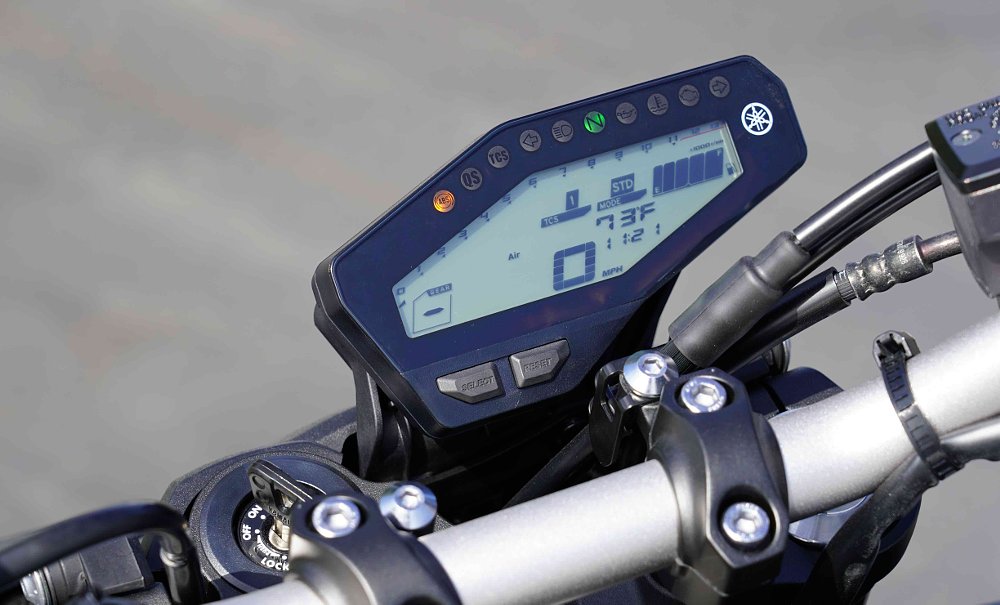
A face lift in 2017 addressed the chassis and throttle problems, to some extent, and also added LED headlights, traction control, and ABS, as well as little tweaks like raising the front of the seat to keep the rider’s crotch from pitching into the back of the tank. Arguably the biggest change was the fork, which got stiffer springs and separate damping functions in order to sharpen the vague front-end feel. The Silly Putty shock stayed the same. Soon after that it adopted the “master of torque” MT moniker to the name to match other markets, but overall the core of the 2020 MT-09 is the same as ever, and in a lot of ways it feels that way. Crucially, an absolute jewel of a powerplant, even if there’s still room for improvement in the throttle response. The fork updates helped, and this current model is better at peeling through a set of downhill curves. I was going to say it’s not half bad, but actually I think it’s still approximately that.
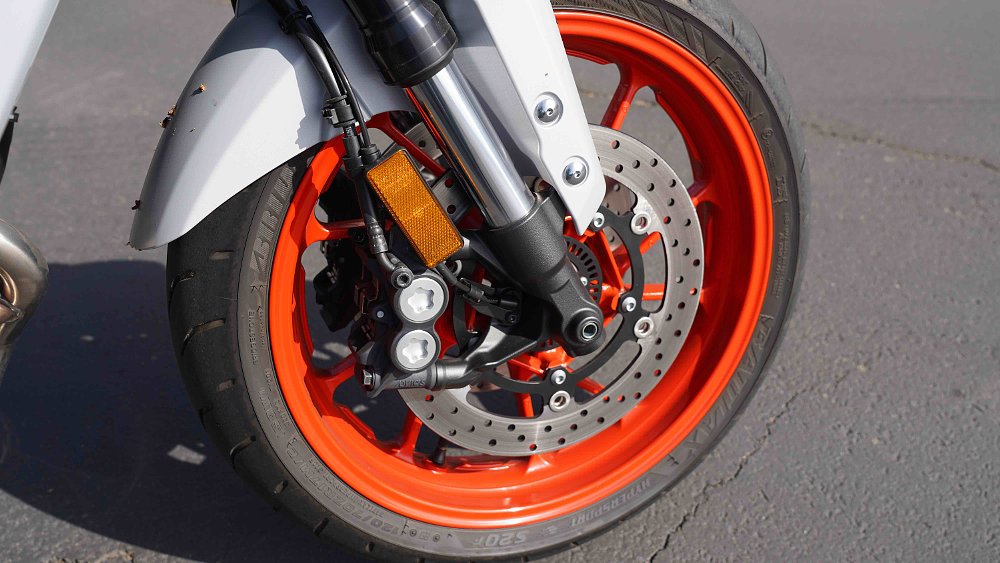
My ol’ friend Ari rode this very MT-09 a few hours north of our office to attend the launch of Aprilia’s new RS660. When he came back I badgered him for fuel numbers and general notes on the MT, as is tradition. His feedback was clear: The fueling and suspension are still behind the curve.
“I remember thinking that the updates in 2017 helped the FZ,” he said, “but riding it back to back with the RS660 made me realize that Yamaha chassis kinda sucks.” Keen Ari Henning fans will know that he had an original FZ-09 as a long-term test bike in 2014 and spent a lot of time and effort rebuilding the fork and fitting multiple new shocks, trying to fix the handling. Once he had it as good as it was going to get, we took it for a spin with a then-current Street Triple, trading bikes along the ride. Even a Henning’d FZ-09 chassis was laughed off the road by the bone-stock Triumph.
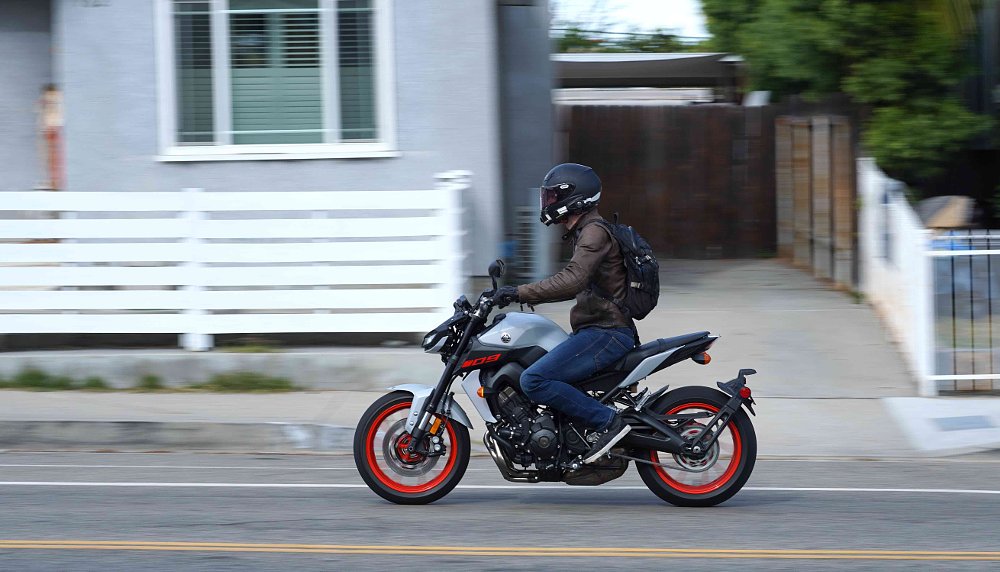
Maybe all the attention paid to the chassis and engine are the reasons the riding position isn’t talked about more. It’s unique, and a little odd. At first, the footpegs seem like they’re set low and far back. Then you realize you’re sitting quite close to the handlebar. Settling into the lowest pocket of the saddle almost creates a supermoto feel, with lots of legroom and an upright torso. It’s good for urban riding, commanding and comfortable. Usually the differences in the rider triangle, especially between bikes in the same class, are slight and often difficult to measure unless you ride the machines back to back. Not the MT-09. From the get-go it feels nothing like a Kawasaki Z900 or Triumph Street Triple.
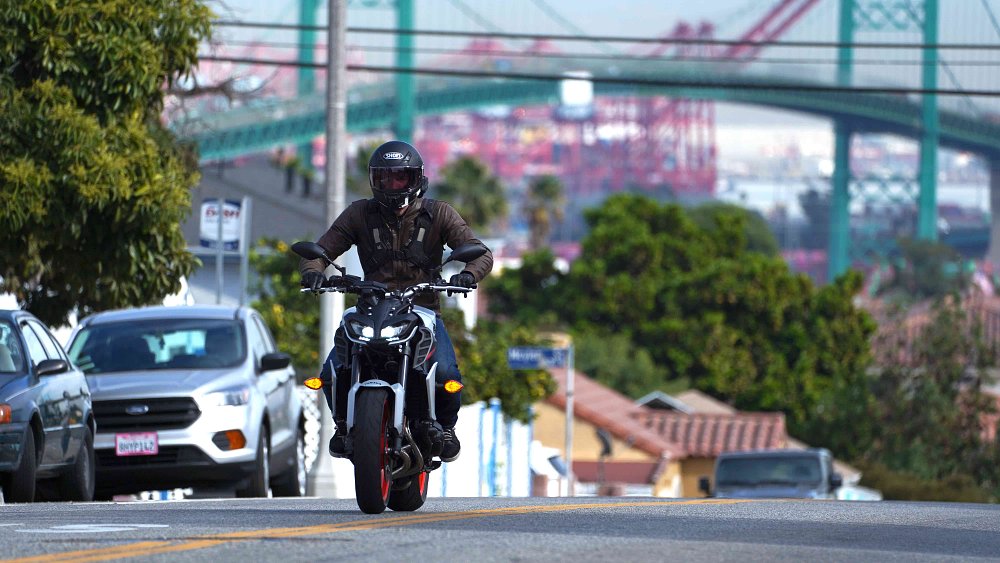
This is probably starting to feel like I rode around on an MT-09 just so I could flame it, but I can promise you that’s not the case. Mostly it’s because there’s a new MT-09 on the way, so in other words now is the right time to reacquaint myself with the current one. Also, I like this bike. Being more than six feet tall, I appreciate the legroom, and mostly I ride around in a city where the upright, quasi-supermoto riding position and soft suspension are actually just what I want. It’s a riot to fire up an on ramp to the freeway or lean back and carry the front wheel over a rise in the road. The engine is great, did I mention that?
I like the tidy switches, too, instead of a massive cluster of buttons. For that matter, I’d like to take a moment to appreciate the common-sense electronics. There are only three options for traction control: Level 1 allows the most slip, including wheelies, level 2 keeps the front wheel close to the ground and will intervene sooner if the rear tire loses traction, and the last option is to shut it off (which you cannot do with ABS, by the way). Simple, effective safety features, no frills.
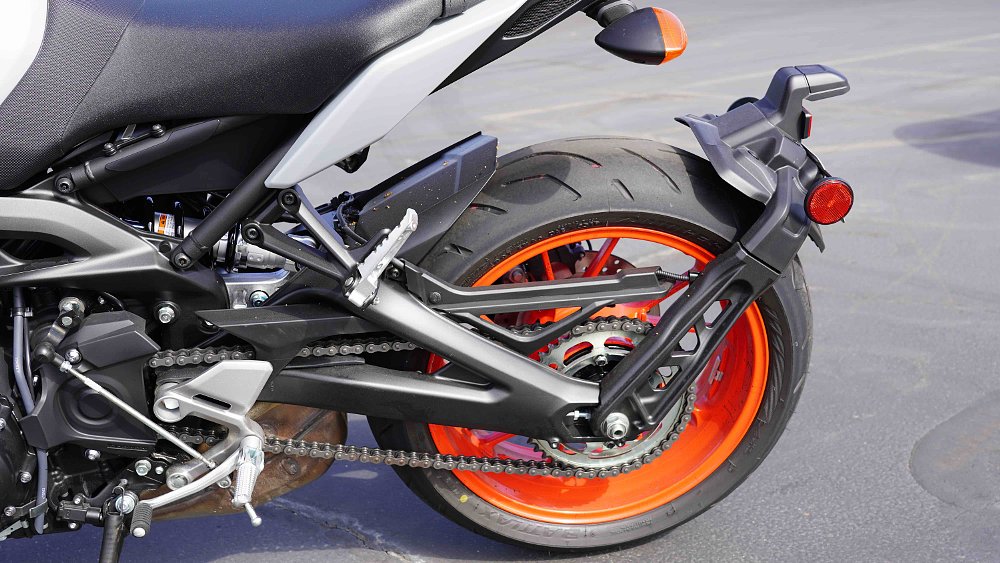
There are some easy things to dislike about this bike, and yet there’s plenty to love. So, the feelings brewing inside me about the new MT-09 are mixed. In some ways the new bike may feel a little more conventional, I only hope it doesn’t go too far. Just because I’m well into middle age doesn’t mean the MT-09 should feel the same. The strange riding position and torque-rich power set it apart from other machines, ones that grew from pulling bodywork off sport bikes or poaching engines from other models. I like that this bike started life as a clean-sheet design, meant to be a rowdy, urban brawler and not apologize for no wind protection or cruise control.
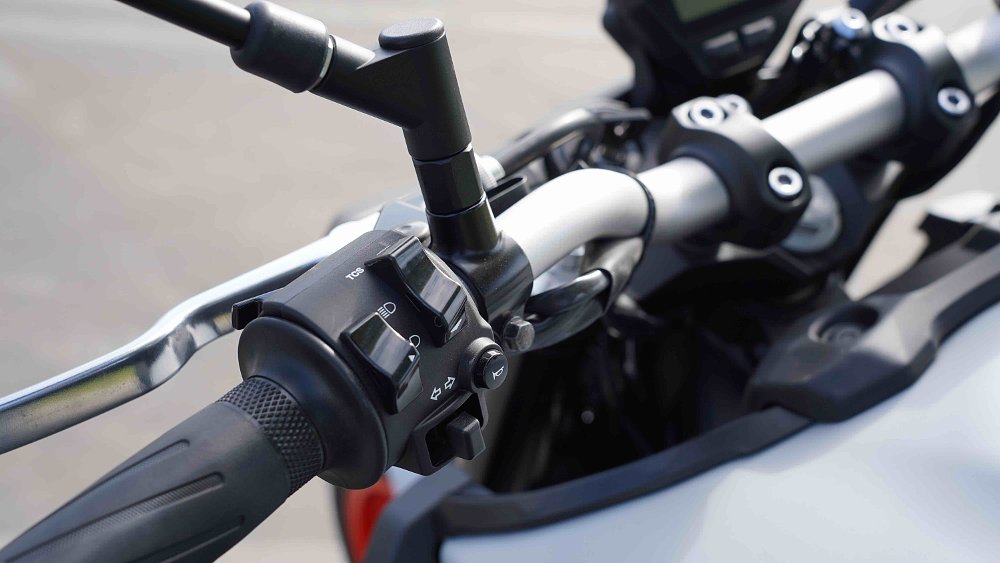
The promise of a new frame and new suspension is exciting, and based on what Yamaha is claiming it seems like a move in the right direction. A bump in displacement to 890 cc via a few millimeters of stroke should keep the engine feeling burly and distinctive. I want a tighter, more composed chassis with better brakes and the same devil-may-care attitude from the engine. It’s an icon of motorcycling in the 2010s, in my opinion, and I’ve got high hopes that the second full iteration of the MT-09 is the one that propels it from being a fun-but-flawed memory in motorcycling to something more.
| 2020 Yamaha MT-09 | |
|---|---|
| Price (MSRP) | $8,999 |
| Engine | 847 cc, liquid-cooled, 12-valve, inline triple |
|
Transmission, final drive |
Six-speed, chain |
| Claimed horsepower | NA |
| Claimed torque | NA |
| Frame | Aluminum twin-spar |
| Front suspension | KYB 41 mm fork, adjustable for spring preload, compression & rebound damping; 5.4 inches of travel |
| Rear suspension | KYB shock, adjustable for spring preload and rebound damping; 5.1 inches of travel |
| Front brake | Advics four-piston calipers, 298 mm discs with ABS |
| Rear brake | Nissin single-piston caliper, 245 mm disc with ABS |
| Rake, trail | 25.0 degrees, 4.1 inches |
| Wheelbase | 56.7 inches |
| Seat height | 32.3 inches |
| Fuel capacity | 3.7 gallons |
| Tires | Dunlop Sportmax, 120/70-R17 front; 180/55-R17 rear |
| Measured weight | 429 pounds |
| Available | Now |
| Warranty | 12 months |
| More info | yamahamotorsports.com |



















